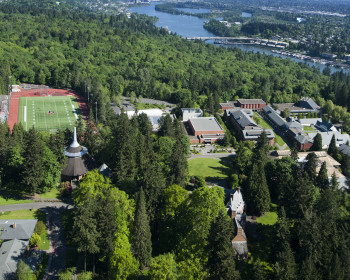Current Students
Here you’ll find resources for current ENVS students at Lewis & Clark. Feel free to browse menu items at right.
Current students, you may also be interested in our goals for the ENVS Program. As our motto—ENVX: Environment Across Boundaries—suggests, the broadest aim of our Environmental Studies Program is to challenge you to cross intellectual, geographic, and communication boundaries as you weave insights drawn from across the sciences and humanities, apply them in local, regional, and global contexts, and learn strategies to connect with the people and institutions you encounter.
These broad goals apply to our ENVS courses via six desired learning outcomes. In each of our courses, we want you to learn:
-
The relevance of a broad range of concepts and areas of knowledge. Key areas of knowledge are covered in the discipline-specific breadth courses (e.g.,environmental economics, or basic ecology), while ENVS core courses help students make sense of how diverse approaches and content weave together.
-
How key actors and processes interrelate. To elucidate the forces underlying an environmental issue, we use concept mapping tools and a variety of conceptual frameworks (e.g., actor-network theory, systems theory) to diagram the important connections among major players.
-
Their multiple spatial, temporal, and conceptual scales. To what broader sets of considerations does the issue relate? How do the configurations of actors change at different scales? What other places manifest similar, or interestingly different, processes?
-
Their descriptive, explanatory, evaluative, and instrumental dimensions. We ask students to approach a situation by identifying what is going on; why it is happening; whether/how it is a problem (and for whom); and how it might be changed.
-
How to collect, analyze, and communicate results of relevant empirical data. Data might take the form of historical land survey maps, tweets, or ivy density surveys. They may be analyzed in a variety of ways—e.g., rhetorically, quantitatively, or spatially—and conveyed through maps, graphs, or written narratives.
-
Ultimately, how to contribute to and benefit from the larger scholarly community in addressing these issues. We place a strong emphasis on communication, and students build skills in literature research as well as sharing the process and products of their work via papers, posters, and in-person and online environments.
Environmental Studies is located in room 343A of John R. Howard Hall on the Undergraduate Campus.
MSC: 62
email envs@lclark.edu
voice 503-768-7790
fax 503-768-7620
Symposium Advisor Jessica Kleiss
Environmental Studies
Lewis & Clark
615 S. Palatine Hill Road MSC 62
Portland OR 97219

